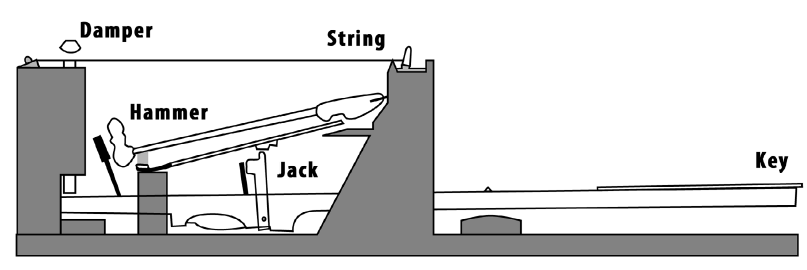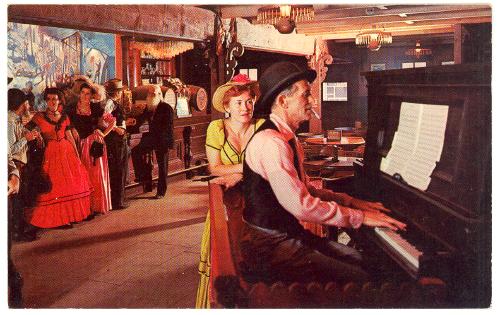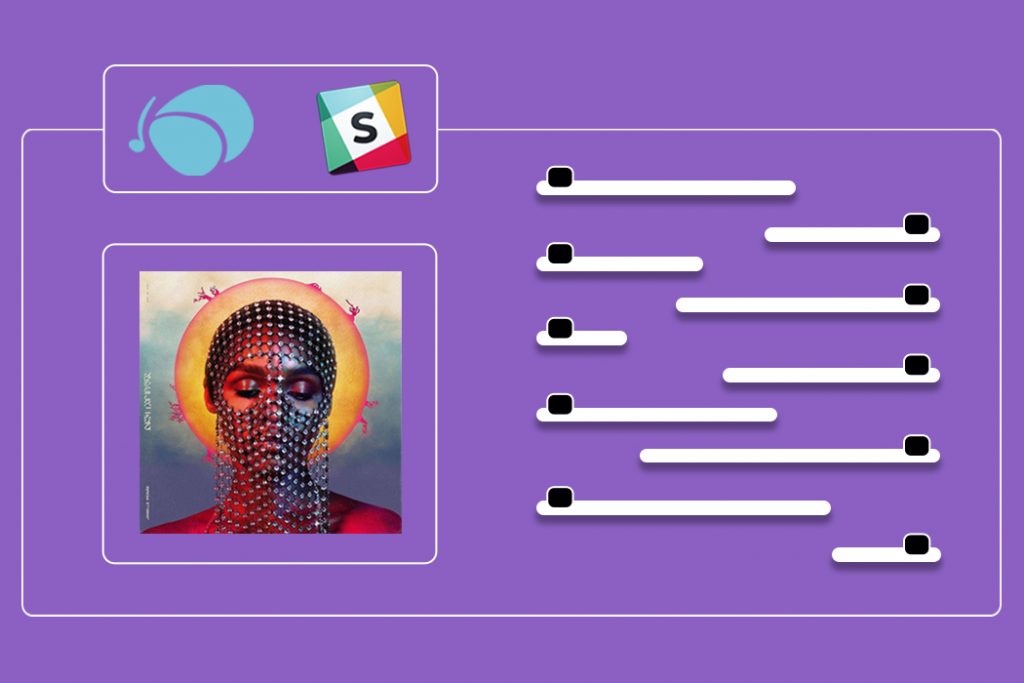
+ Bridge the worlds of theory, improvisation, and jazzy hip-hop, and improve your piano chops with Grammy-winner Kiefer in his course, Kiefer: Keys, Chords, & Beats.
Beautiful, versatile, and astoundingly complex, the piano holds a key place in nearly every form of music. It can be found across the globe in the back corners of smoky nightclubs, the palatial stages of concert halls, and the privacy of many homes.
Part of this instrument’s ubiquity is due to how standardized it has become over the years, evolving from a variety of keyboard instruments like the organ, harpsichord, and clavichord into the nearly universal piano we know today. After developments in the 19th century, the acoustic keyboard has remained mostly unchanged — that is, until one master craftsman named David Klavins began rethinking the way pianos are made.
David Klavins is a German-Latvian piano maker who apprenticed at the Wilhelm Schimmel Pianofortefabrik in Braunschweig, Germany. While studying, Klavins grew critical of the design and materials used in making pianos. He felt that with the advances in both acoustics and materials science, people were capable of making a far greater — and far bigger — piano then had ever been made before.
How does a piano work?
The concept is pretty simple: You push a key on the keyboard, and a lever flings a mallet at a string. But, similar to a classic car, a piano’s simple beauty is known only between the instrument and the person using it — and things get much more complex under the hood. One look inside the lid of a piano reveals an elaborate wreckage of cloth, metal, wood, and tightly-wound wire.

So there are many moving parts. And an entire book could be written about the function, tonal quality and preferred materials of every single piece that makes a piano. Instead, we’re going to focus on two main elements — wood and wire.
No amp required
Even though pianos are a member of the keyboard family, they still make sound the same way that a violin or cello would. There’s a string that vibrates, and when that vibration contacts wood, it resonates and is amplified.
The hard wood and strings of a piano are under immense pressure, which makes the vibration as resonant as possible — in fact, a piano’s wooden soundboard actually bends upward, in what is known as a crest. The soundboard defines the tone quality of the piano, and comes in a variety of sizes.
Many people are familiar with the upright piano, where the soundboard stands vertically behind the keyboard. Most people also know of the grand piano, which rotates the soundboard horizontally, and allows the piano’s housing to be opened for better volume. In classical music, a grand piano is required for nearly every piano performance, whereas upright pianos are known be featured in smaller spaces like bars and saloons.

Size matters
There are a number of different sizes of grand pianos, but the three most common are baby grand, parlor grand, and concert grand. A baby grand starts at about 5 feet long, a parlor at 7 feet, and concert grands range from 8 feet and up. With so many options, why make longer pianos?
There are three reasons — tension, volume, and tone quality. Consider two string instruments: a violin and a string bass. They both work the same way, but are built very differently. String instruments need to push the maximum amount of vibration to the wood in order to produce enough volume, and this is achieved by tailoring the scale length and body size to the instrument’s pitch range.
A violin plays in a high register, so it needs to amplify small vibrations. Thin strings and a small body help keep the strings taught against the wood, which produces the strongest possible vibration. However, if you take a violin and tune it down to double-bass pitches, the strings would be way too loose, and nearly unplayable. You’d hear a change in pitch every time you pressed the string too hard, and it would sound too “thin” and quiet. This is because the vibration is too weak to project into the wood. Lower pitches need long, thick strings to vibrate into a larger body, which produces the right volume and tone. (Learn more about the sound and musical roles of the different string instruments in Soundfly’s “Orchestration for Strings” course.)
The concept is exactly the same in pianos. Ever wonder why a grand piano has that uneven “B” shape? It’s because the low strings need to be longer, thicker, and better supported by the soundboard. Believe it or not, most pianos are actually much smaller than they should be for optimal projection. An upright, for example, is very small, and while it may not be as severe as trying to play a bass line on a violin, the effect is identical: “thin” tone quality, low volume, and inconsistent pitch. On top of that, in loud setting the player will often have to pound at the keyboard to properly hear themselves.
The Model 370
Ok, so we know that pianos are insanely complex, and that they need to project vibration, and they need to be huge. We also know that a piano’s scale length is important for the right tone and volume, and that modern pianos may not be big enough.
So what’s the solution? Introducing the Klavins Model 370.
David Klavins built the Model 370 in the 1980s — weighing in at a whopping 2 tons, this 370 cm (12′) piano captures string sounds in a way you’ve never heard before.
For starters, the piano is loud, and a piano’s volume contributes significantly to its tone. In the same way that an upright player must pound the keys to get an acceptable volume, a performer using the Model 370 is able to use significantly less weight while playing, which opens up many more tone colors than a regular grand piano could offer.
Further, the piano can project low frequencies much better, in the same way a double bass can project its low notes better than a violin could. This unique sound creates a completely different quality in the lower register, and can even shed new light on the traditional piano repertoire.
While there is no “perfect” sound, piano-making is an art of balancing musical needs with practical limitations. It is very rare for a piano maker to build their dream piano without worrying about the resources available to them. The piano is now at the University of Tübingen in Germany, where I understand it is still used for occasional performances. It’s also been used many recordings, including the music of Nils Frahm, who liked the piano so much he had another model — the Una Corda — made for his own use.
If you’re convinced you need to try a MUCH bigger sound, but aren’t ready to jump on a flight to Germany, Native Instruments sampled the Klavins Model 370 for their piano plugin, The Giant. And if you’re so convinced that bigger is better you’ve begun wondering how 12 feet could ever be big enough, you’re in luck.
In 2013, Klavins began work on a next line of pianos — the Model 450i — which, when completed, will sit nearly 15 feet high!
Don’t stop here!
Keep learning about theory and harmony, composing and arranging, songwriting, and more, with Soundfly’s in-depth online courses. Subscribe for access to all, including The Creative Power of Advanced Harmony, Orchestration for Strings, and our exciting new course with Grammy-winning pianist and producer, Kiefer: Keys, Chords, & Beats.




